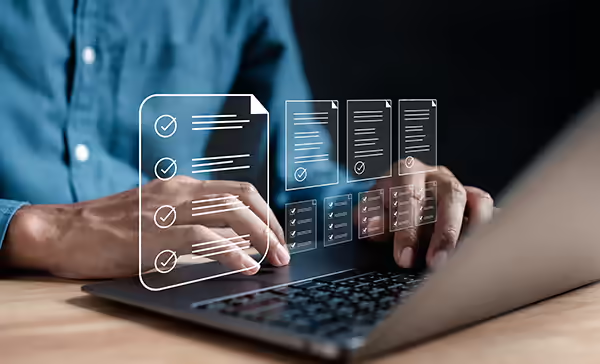Ecommerce has had a great 2016, and is set to have an even better 2017 with a number of new trends that will shape how we shop into the future.
Ecommerce is always evolving, setting new benchmarks and baselines for online retailers to adhere to. But what trends can we expect in 2017, and how will the online shopping experience change over the course of the year?

Real-Time Analytics
Real-time analytics driven by signals provide a deeper insight into customer behaviour. Software such as Kissmetrics allows tracking signals to be applied to individual sales channels and source of conversion, helping marketing and sales teams find the most effective sales funnel.
Analysing individual conversion points allows retailers to know much more about individual interactions, and how to improve the conversion process. Being able to see the behaviour of potential customers and those who converted gives a lot of insight into what changes can be made in order to improve the overall conversion rate of the site.
Subscription-Based Offerings
More and more subscription-based business models have been taking off of late, and could be the future of how certain products are offered.
SaaS businesses have seen great success with a subsciption model, and this could have an impact on other industries. Platform as a service is now a big trend for ecommerce, when you consider companies such as Uber completely revolutionising a particular industry.
Many ecommerce businesses are now offering products as a subscription, including bundles and other discounted packages each month. Essentially, anything that is consumed regularly and will need replacing can be used in a subscription model, such as snack boxes or beauty products.
The benefits include more flexibility for the consumer, alongside recurring revenue for businesses.
Personalisation
With more data available, this allows businesses to tailor advertisements, content, and specific products to particular customers.
You can show the exact right advert or product at the right time, whether it’s on the web or via social media.
This is sure to grow within the ecommerce sector, as more businesses make the most of personalised buyer journeys to increase conversions.
Examples can include personalised deals on products that customers may buy a lot of, or targeted advertisement of products or services that a potential customer has browsed.
Live Customer Engagement
Being able to engage customers directly through different ways helps to create more visits, and encourage potential customers to spend more. You can help create live customer engagement in a few ways:
- Answer questions
- Send updates via newsletter
- Post relevant and helpful content
- Share links and content
- Interactive web design
- Special offers for loyalty
- Customer service software and Online Chat
- Social media
83% of customers are said to want live chat or support when shopping online.
Mobile Shopping
As mobile devices now make up over half of all online traffic, it’s no shock that it has had a huge impact on ecommerce. However, many users will still prefer to shop on devices.
While many people already shop on their mobile phone or tablet, more shoppers will be using these devices for regular online shopping sprees in 2017.
Recent research has shown that mobile accounted for 59% of sessions on ecommerce sites, but made up 38% of revenue. Desktop still tops mobile for spending, but this is still a promising statistic as it would not be this high in recent years. Also what it does suggest is that omnichannel shopping is widespread, with more people browsing on mobiles, and then finally making a purchase when they have the time on a desktop or laptop. This means having a top mobile experience is still an essential part of any ecommerce store.
This also means that mobile engagement is sure to increase, as more brands will look to see how they can capture more customers when they check their mobile phones.
Mobile and desktop customers are not separate entities, as customers will switch device within minutes or even seconds. If you can provide a seamless cross-device experience, then this can be the key to creating more conversions.
Predictive and Advanced Search
More store searches are making use of predictive search, in order to provide information for potential customers faster, and encourage conversions.
Rather than simply searching for products, having an advanced search that predicts products, ignores incorrect spellings, and provides a more advanced results page based on the search query can have a big impact on your conversions.
Artificial Intelligence
However the next step in the future is to use artificial intelligence and collected data in order to provide a superior shopping experience.
Artificial intelligence opens up possibilities for targeted advertising based on data of your actions, and personalised shopping experiences beyond related products.
AI has the potential to change the buyer journey, as different sources and digital assistants with different AI will respond in a variety of ways. Amazon’s Echo for instance, is sure to send more people to Amazon, which means other retailers will need to compete. As more people talk to machines, and
Chatbots
Chatbots have existed for a few years, but it’s only in 2016 that they have really grown in popularity.
A chatbot is any software which automates repetitive processes including answering questions through a “chat”. WhatsApp, Facebook, and Google are introducing bots and integrating them with chats to help with online shopping and customer service. This trend is set to continue into 2017.
Chatbots can help just like a human, but without the cost of hiring a human to chat to customers.
A chatbot could be used to suggest potential products based on the preferences of a customer, and providing personalised results. They can compare prices, and help customers through the buying process.
While chatbots haven’t taken over yet, you’re sure to see more of them in 2017, but it remains to be seen how effective they will be just yet. In the future once AI is even more advanced, they’re sure to be a very useful tool for any online retailer.
Live Sales Assistants
In a similar vein, more retailers are beginning to offer live sales assistants. This is different from a chatbot or a general live chat for support, but instead hopes to bring a retail experience online.Bringing the retail experience online
By having actual sales assistants online to chat with customers, they are able to answer in real-time, and provide real answers other than just support queries.Bringing the retail experience online
Sales assistants can provide help and direct customers towards specific products, which is what people may expect when walking into a store. Coupling this with the ease of online shopping, and you have the best of both worlds.
Simple, Free Returns
With the growing influence of Amazon Prime, there are many things people are beginning to expect of ecommerce retailers. Simplified return processes is one.Automated return processing
More customers expect a more automated return process, with an easy way to return products they doesn’t meet expectations.
More shoppers also expect complimentary return shipping without hidden fees.
While this may seem like something your store wouldn’t consider due to the cost, it can help you stand out from the crowd. Free, simple returns can give customers that extra confidence in their purchase, and encourage them to convert.
Next Day and Same-Day Delivery
Just as Prime has changed what Amazon can offer, it has also meant more shoppers expect quick deliveries.
This means more and more businesses will be expected to provide next day shipping, with big ecommerce retailers such as Amazon offering same-day shipping across a larger portion of the country.
In fact, Forrester found that 29% of consumers would be willing to pay more for same-day delivery. And of course, drone deliveries are coming in the future. So it’s sure to become more popular soon enough.
2016 has provided many new advancements for ecommerce, as well as setting the tone for 2017. Black Friday set new records worldwide and in the UK, and proved as popular as ever.
2017 is sure to bring a lot of innovation in the ecommerce space, and it will be interesting to see what ecommerce trends emerges amongst online retailers, and what the big players bring to the table.











